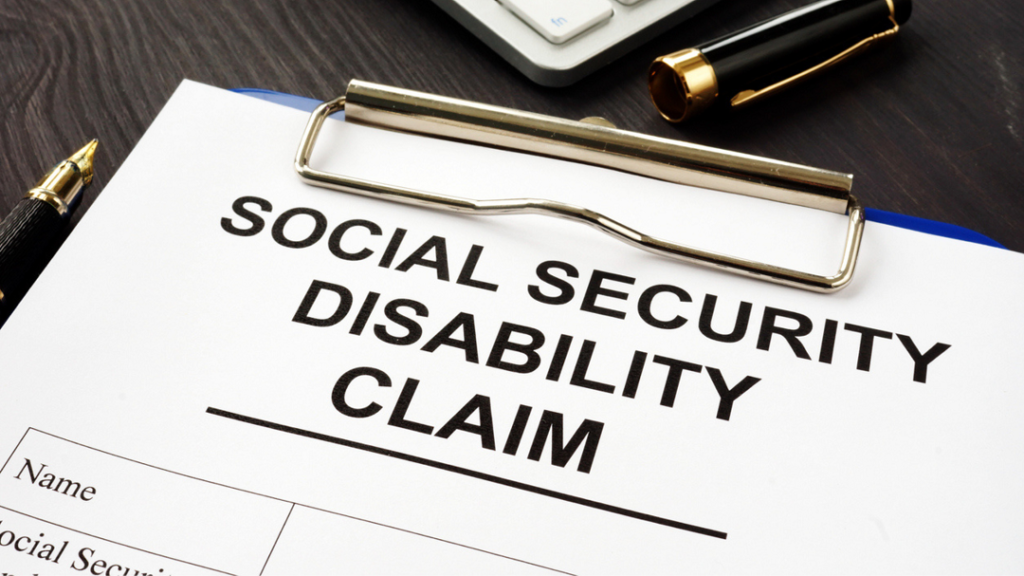- News
- Social Security Disability Insurance Is an Essential Benefit You Paid into For Your Entire Career — But You Have to Know How to Get What You Paid For
Social Security Disability Insurance Is an Essential Benefit You Paid into For Your Entire Career — But You Have to Know How to Get What You Paid For

Many people know that the Social Security Administration’s retirement benefits program provides a crucial financial safety net for countless American workers trying to navigate their golden years. But did you know that Social Security also offers a highly worthwhile disability benefits program for workers of all ages who find themselves unable to work due to injuries or other debilitating conditions? While disability is hopefully something you will never have to worry about, here’s a fact you may find alarming: the Social Security Administration says a 20-year-old worker has a shocking 1-in-4 chance of becoming disabled before reaching retirement age. With that in mind, having some advanced knowledge of this confusing system may prove priceless should the unthinkable happen to you or a loved one.
In this week’s article we’ll discuss some basics about Social Security’s disability benefits program and how their government employees determine whether an applicant is qualified for benefits. In future, follow-up articles, we’ll also describe detailed steps in the application verification process, how you can maximize your likelihood of approval for your disability claim, and what you can do next if your claim gets denied.
What Kinds of Financial Assistance Does Social Security Provide?
First and foremost, you need to know that there are two distinct programs offered through Social Security that can help disabled people receive income prior to their retirement age. The first – and arguably the most important – is known as Social Security Disability Insurance (SSDI), and the second is Supplemental Security Income (SSI). Let’s break it down.
- To obtain payments from SSDI, you must have worked long enough and paid enough into the Social Security system through the taxes on your wages to accrue sufficient Work Credits based upon your age at the time you became disabled. In certain situations, your loved ones may also qualify for benefits based on your earnings record even if they didn’t work themselves. The best way to view SSDI is that it is an insurance policy that you’ve paid into for your entire career, and like all insurance policies, you must pay your premium (have sufficient Work Credits) to qualify to apply in the first place.
- To receive income under SSI, no work history is required (children qualify for this program through a different medical analysis that we may touch on in a future article) but you’ll have to be someone with “low income and few resources” in order to qualify to apply.
The benefit amounts offered by the two programs also vary widely:
- If you qualify for SSI, the most you can receive as an individual is $914 a month for 2023, or $1,371 a month as a couple if you and your spouse both receive these benefits. This amount then gets lowered through a complex calculation based on your income and resources and can change from month to month depending on changes in these income and resources.
- On the other hand, SSDI payments are significantly higher, with an average recipient qualifying for nearly $1,500 a month next year; and families with a disabled wage earner can receive much more (averaging $2,616 in 2023). This amount is not affected by other sources of income unless you return to work and earn above a certain amount of monthly wages called Substantial Gainful Activity that we will discuss later in this article.
What Are the Qualifying Criteria for Disability?
Once the initial technical qualifications to apply have been met and your disability claim begins in earnest, the medical analysis Social Security employs is identical between SSI and SSDI. To medically qualify for disability benefits, the government requires you to prove that you have experienced a medical condition that’s expected to last, or have lasted, at least 12 months, or be expected to result in death. This medical condition must either then satisfy the narrow criteria listed in Social Security’s Listing of Impairments, or be found to be so disabling that it would prevent you not just the work you’ve done before but also any job in America (although this is significantly impacted by your age when the disability began). If your condition does not meet those strict criteria, then your disability claim will be denied.
In 2019, 55.6% of all SSDI applicants and 75.1% of SSI applicants were denied at the initial phase. However, receiving a denial doesn’t mean you’ve reached the end of this process, as there are several levels of appeal available beyond the initial level that we can assist you in filing. You traditionally have 60 days from the date on the denial letter to file for the next level of appeal, so please do not wait to contact us should you be denied.
How Long Does It Take to Get Approved?
Getting SSDI benefits takes time… usually a lot of time. While the Social Security Administration estimates that processing an initial application for disability benefits “can take on average three to six months,” their own reported data tells a different story: the average case processing time has ballooned from 110 days in 2016 to 184 days in 2022. Unfortunately, this trend is expected to continue and potentially expand due to continuing budget issues. Please note that this timeframe does not include the various levels of appeals that we will touch upon in future articles. Ultimately, this means that you should apply for benefits immediately after you stop engaging in work above a certain monthly amount called Substantial Gainful Activity ($1,470 per month in 2023). You simply cannot maintain a claim for disability until you stop working above that line, no matter how hurt you are.
Keep in mind, however, that even if you are approved in a short period of time, there is something called an elimination period. This means that SSDI benefits will not start until a period of five (5) months has elapsed since the onset of the disabling medical condition. As an example, if you applied after you were hurt and stopped working in January and then get approved in May, benefits will not start for you until July, as the 5-month period starts in February and goes through June. Please note, though, this 5-month elimination period does not apply for SSI, as benefits for SSI are payable starting the month after the onset date of the impairment.
How Do I Start This Process?
The easiest way to see an estimate of your benefits is by creating and logging into your personal My Social Security account on the SSA’s website. Additionally, if you’re wondering about whether you’ll qualify for either SSDI or SSI, the most surefire way to get the answers you seek is by contacting your local Social Security Field Office. You can also see if you qualify for other types of Social Security Benefits through the Benefit Eligibility Screening Tool.
Fortunately, the SSDI application is available for you to complete online. Additionally, you can start the SSI process online by going here, or by calling your local Field Office. Traditionally, filing for SSI will also act as an application for SSDI, but not vice-versa (there is a section in the SSDI application where you can tell SSA you are interested in SSI, however, and SSA will reach out to you at a later date for the interview).
Coming Soon… Unpacking the Disability Approval Process
After you’ve done all the legwork necessary to apply for disability, a lengthy bureaucratic process takes place to thoroughly verify your eligibility for benefits. We’ll describe those behind-the-scenes steps in an article that will be published in January 2023. In the meantime, if you or someone you know has been denied a disability claim, or if you want to start a new SSDI claim with professional assistance, it’s possible we can help. Our number, as always, is 855-MIKE-WINS (855-645-3946), or click here right now to make an instant online connection.

Content checked by Mike Morse, personal injury attorney with Mike Morse Injury Law Firm. Mike Morse is the founder of Mike Morse Law Firm, the largest personal injury law firm in Michigan. Since being founded in 1995, Mike Morse Law Firm has grown to over 200 employees, served 40,000 clients, and collected more than $1.5 billion for victims of auto, truck and motorcycle accidents. The main office is in Southfield, MI but you can also find us in Detroit, Sterling Heights and many other locations.








